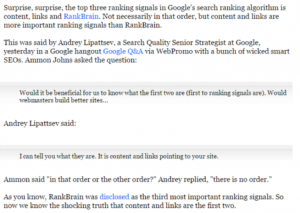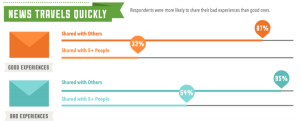Kath Pay has spent her entire career in email marketing, as a solutions provider, a consultant, a writer and a speaker. She still loves it.
In this series, we dig deeper into the stories of our expert contributors. This interview has been edited for clarity and length.
Kath Pay has spent, essentially, her entire career in email marketing — and she still loves it. She travels the world giving presentations and training sessions, she consults with her clients, she’s the author of a best-selling book — “Holistic Email Marketing” — and she contributes to MarTech.
The story begins in New South Wales.
Q: How did this all start?
A: In the 1990s, I started a web design agency. What happened was I had a client who had a need — we’re talking about 1996 — to do some email marketing, which of course was completely and utterly new. So my programmer and I looked into this and we created the nucleus of an email marketing system. We rolled it out to her, rolled it out to all the rest of the clients, and pretty soon email marketing took over my web design agency and I was doing email marketing full time. Speaking and writing and everything started back then.
The reason why I moved over [to the U.K.] was that back then, there weren’t a huge amount of providers. It was easy to sell, even to big household brands in Australia. You’d just go in and say, ‘You can see who opens and who clicks.’ These were such big brands, they were international, and many had parent brands in the U.K. or U.S. The parent brands wanted a solution that was local; hence the decision to move to the U.K.
I joined the Direct Marketing Association [now the Data & Marketing Association], was on the email marketing council for 10 years, was very active there; created a blog for the DMA. In 2009, I decided I didn’t want to be a solutions provider any more as far as the tech goes. I bowed out and became a full-time consultant.
Q: That must have been a new thing.
A: Nobody’s ever corrected me when I say this: I think I was one of the earliest email marketing consultants. And then I did a lot of training; I was an email marketing trainer, and I was the first in the U.K. to train on personalization. Then I carried on speaking, writing and training. I did some research and I’ve spoken across five continents, 53 cities, 27 countries and over 200 presentations.
Q: Wow. One thing that’s unusual about your career in comparison with some of our other contributors, is that we don’t see you start on one path and then change to something else. Apart from the initial web design, you’ve been in email through your entire career.
A: Yes. I still love email. I’m still like a newly wed with email.
Dig deeper: What is email marketing and why we care: A marketer’s guide
Q: And most of your career was U.K.-based?
A: Yes. I lived there for 18 years and, although I’ve been in Antigua for the past few years, the office and the business is still U.K.-based.
Q: Was it a matter of being in the right place at the right time? Email suddenly kicked off and you were ready for it.
A: Today, people do choose to be an email marketer, but more often than not the majority of us just fall into email. The fact that we just fall into this channel, which is so essential to digital marketing, is incomprehensible! It was good timing, but I never thought I was going to become an email marketer, not by any means.
Q: So many things in the digital world come and go. Although younger consumers may not open emails, there’s still a huge audience, slightly more mature, that will. It’s stayed a key channel, hasn’t it?
A: The thing about the youth — and this has been proven, because 10 years ago we were saying that the youth of today are not opening emails — once they start in a job, guess what happens. They start to use email.
Q: So, it’s an age thing, but not a generational thing?
A: Yes, at the end of the day everyone ends up using email.
Q: Your business and your book are both called “Holistic Email Marketing.” Tell us what you mean by that.
A: When I started consulting, the buzzwords were multi-channel and omnichannel. Brands were saying we need to be able to connect our channels. They were coming at the right question from the wrong angle. Rather than ‘How do we get social and email to work together?’ they should have been looking at the customer. How do we give a seamless, enhanced customer experience to our audience on the channel that they want (and how and when they want it).
Why do we want to connect the channels? For our efficiency or for the customer’s benefit? Holistic — I come from Australia and grew up with holistic medicine — that’s the approach we want to be taking; we want to be looking at the customer and what they need. All the channels affect each other.
Q: What is there in the future of email marketing that either excites or concerns you?
A: I can’t avoid the elephant in the room: generative AI. It excites me; it also scares me. It excites me because of the potential, but it needs to be implemented well. With email marketers, the excitement is completely understandable, because we tend to be under-budgeted, under-resourced and incredibly pressured. When you’ve got a silver bullet like generative AI, it’s easy to start over-relying on it. It’s easy to jump on the bandwagon without fully researching, training, putting in boundaries and rules and regulations.
It’s such early days. What you should be doing is looking at problems and challenges that need solutions and wondering if generative AI can actually assist you with that.
The post Kath Pay: Spotlight on the expert appeared first on MarTech.
MarTech(8)
Report Post




